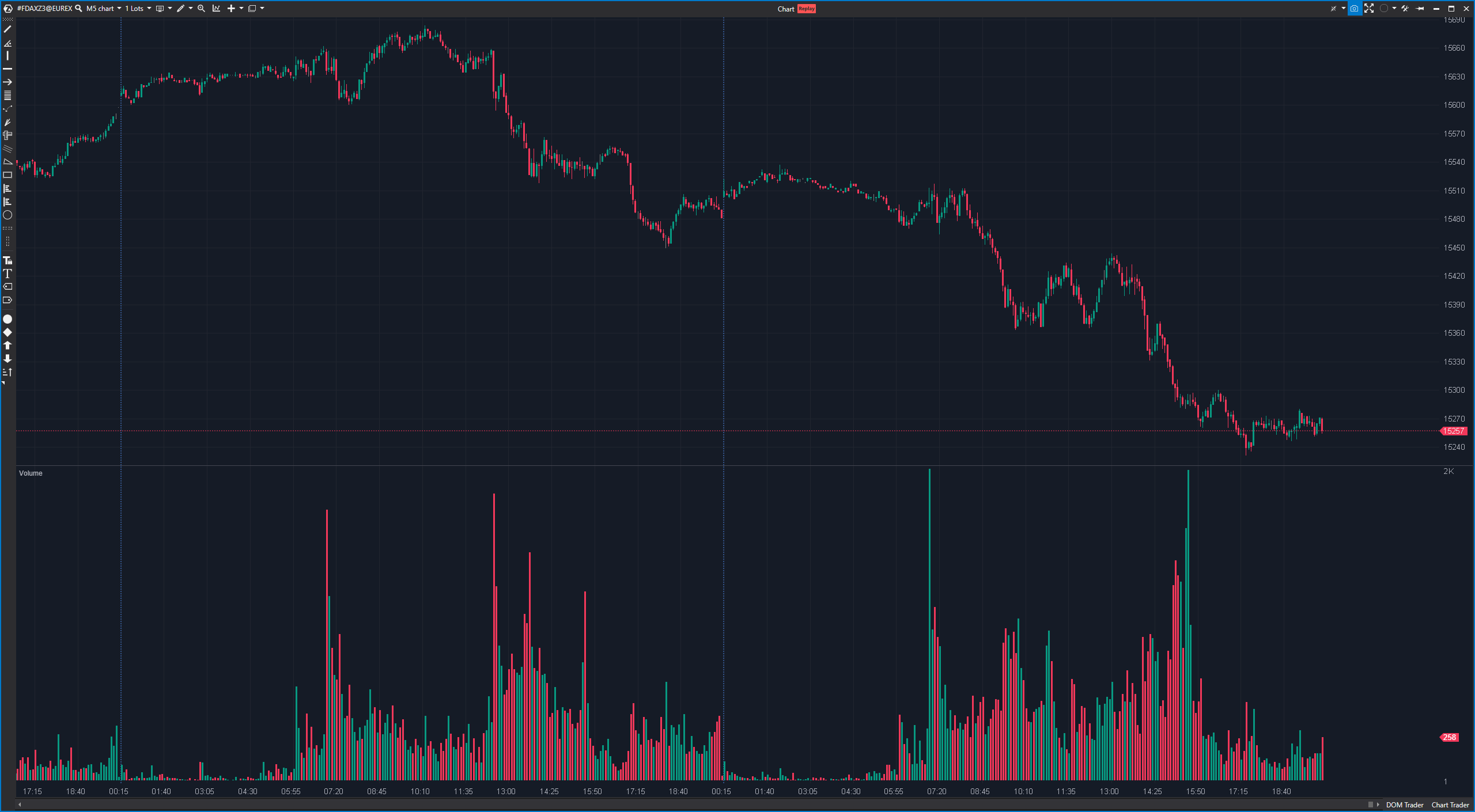Trading volume is an important technical indicator in financial analysis that measures the quantity of assets traded, such as shares, foreign exchange or commodities, over a certain period of time. The trading volume is normally displayed as a histogram or bar below the main price chart. It can be interpreted in various ways and offers important insights into the market.
Advantages of the trading volume:
- Confirmation of trends: A rising volume during a trend can confirm the strength of this trend. If the price is trending in a certain direction and the volume is increasing, this indicates interest and support from market participants.
- Identify reversals: A sudden increase in volume can indicate possible reversals. If the price takes a direction and the volume increases unexpectedly, traders could look for a possible trend reversal.
- Determining support and resistance levels: Volume can be used to identify potential support and resistance levels. Higher trading volumes can indicate stronger support or resistance levels.
Disadvantages of the trading volume:
- Lack of information on quality: The volume only provides information on the quantity of assets traded, but not on the quality of the transactions. These can be large institutional trades or many small retail trades, which can have different effects on the market.
- Lagging indicator: The trading volume is a lagging indicator as it is based on completed transactions. It cannot therefore be used to accurately predict future price movements.
Practical application of the trading volume:
An example of the practical application of trading volume is the use of volume profiles to identify support and resistance levels. A volume profile shows how much volume was traded at different price levels.
- High volume areas: Areas of high trading volume can be considered strong support or resistance levels. If the price comes close to such a range, this may indicate a potential market reaction.
- Low volume areas: Low volume areas can lead to the price being breached more easily as there is less buying or selling interest.
Traders can also use volume to confirm trading signals. For example, if the price increases and the volume also increases, this could be a bullish signal indicating a continuation of the uptrend. Conversely, if price falls and volume rises, this could be a bearish signal indicating a continuation of the downtrend.
It is important to use trading volume in conjunction with other technical indicators and comprehensive market analysis to make informed trading decisions. Volume alone should not be used to make trading decisions, as it only represents part of the overall picture.

